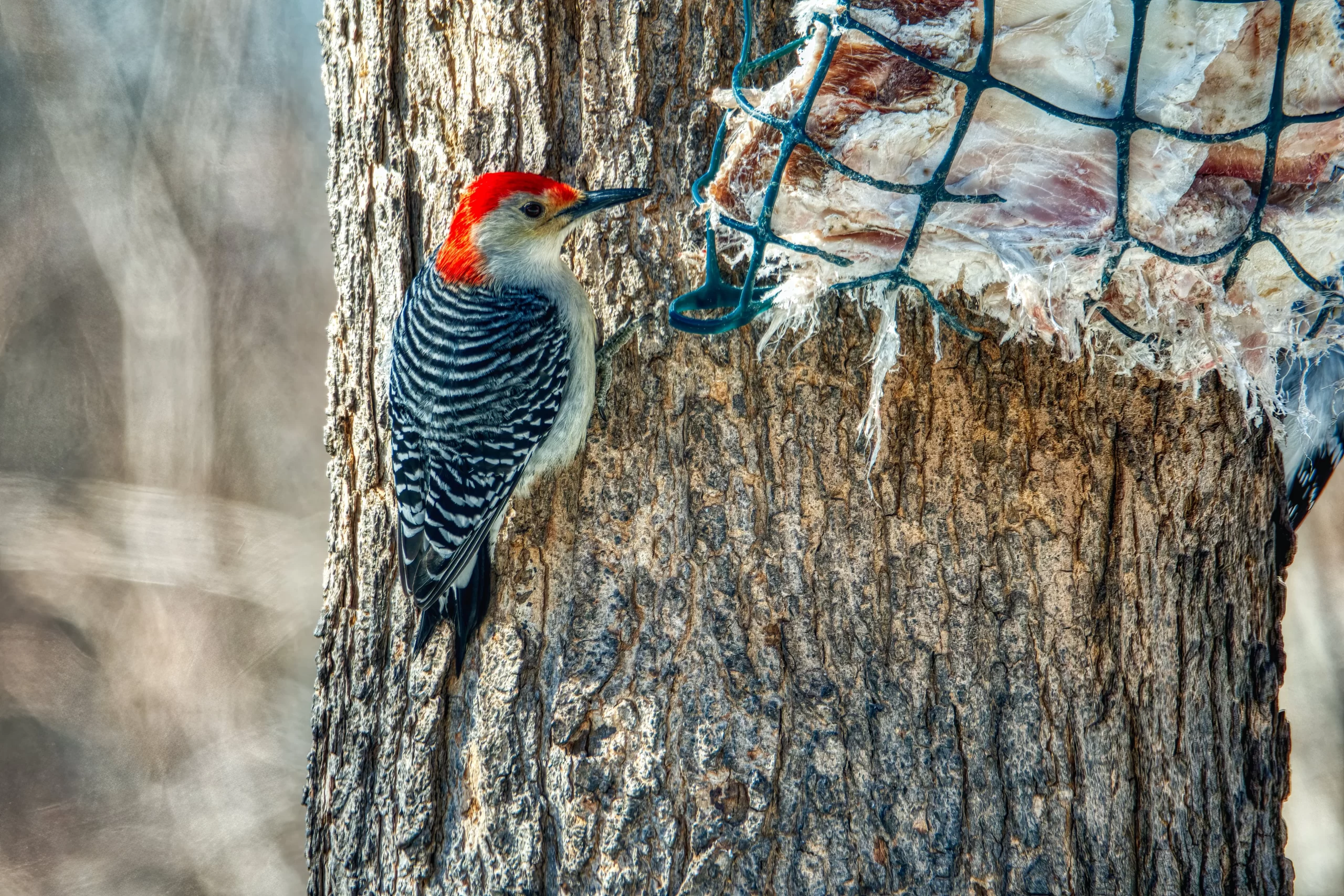Alberta is best known for being the province where the wild population of Whooping Cranes go to breed. While the Whooping Cranes are notable, Alberta’s other birds rarely get much attention. It turns out that the province is home to a slew of tremendous birds, with the woodpeckers in Alberta being a group of birds that capture the attention of many.
Alberta is home to 10 regular woodpecker species, with each having its own unique appearance and preferences. Those interested in knowing more about Alberta’s woodpeckers have come to the right place! Continue reading as I discuss the woodpeckers in Alberta in great detail.
Table of Contents
10 Woodpeckers In Alberta
American Three-toed Woodpecker
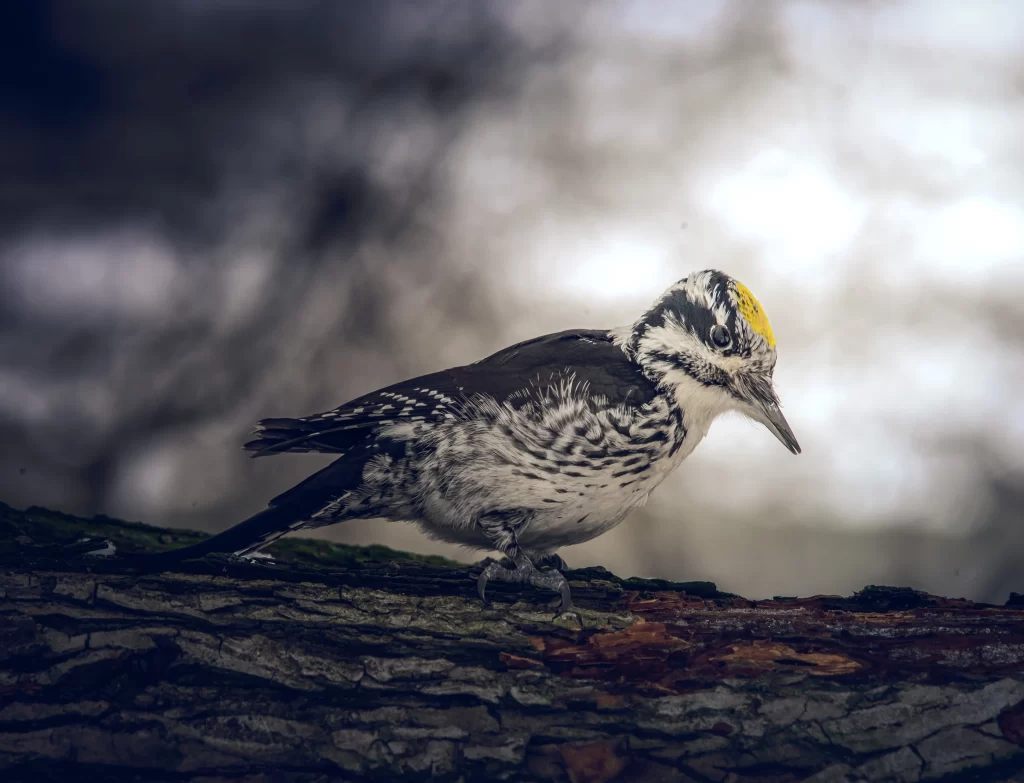
Identification
American Three-toed Woodpeckers are 8.25 – 9 inches (21 – 23 cm) in length. Males have yellow caps that distinguish them from females. Aside from this feature, the sexes look the same, with both having white, unbarred undersides, barred flanks, and black backs with a patch of barred white in the center.
Habitat and Range
The boreal forests of Alberta are the perfect places for American Three-toed Woodpeckers to live. Here, they forage in areas that have recently been burned, flooded, or impacted by some other natural disturbance, leading to a substantial increase in the number of insects present.
American Three-toed Woodpeckers can be found throughout Alberta save for the southeastern portion of the province.
Status
Alberta is a terrific place to look for the uncommon American Three-toed Woodpecker. Indeed, about 6,750 observations from here have been submitted to eBird.
Black-backed Woodpecker
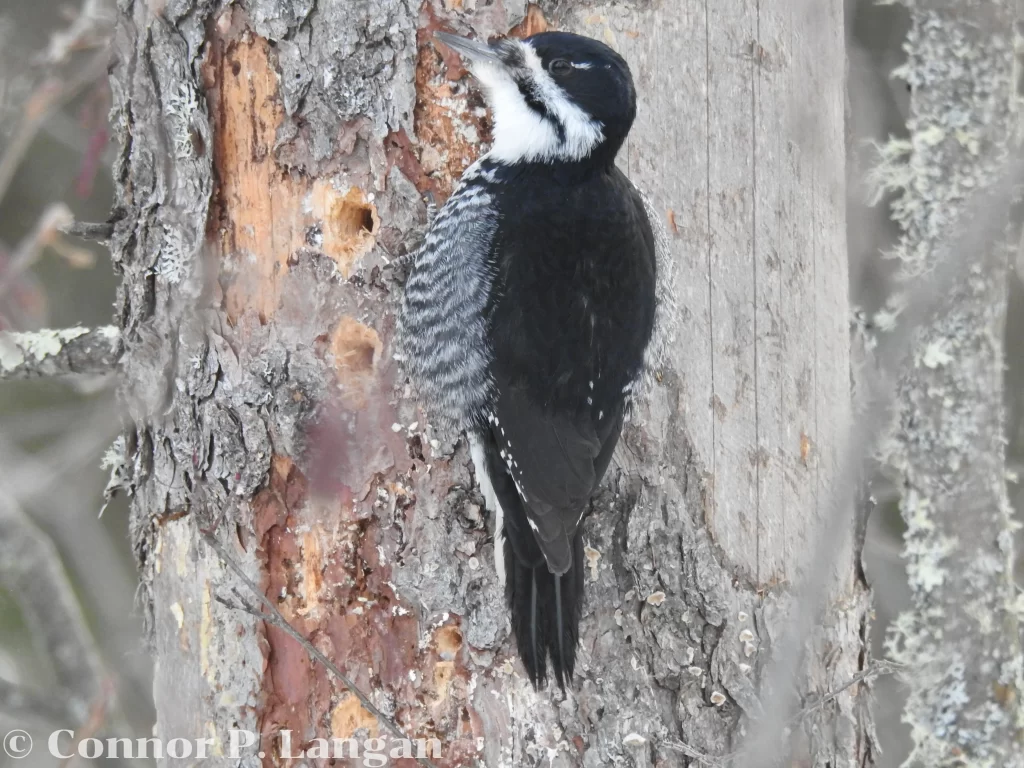
Identification
Black-backed Woodpeckers are about 9 inches (23 cm) in length. They have solid black backs with barred white flanks and white undersides. Males have a small yellow crown.
Habitat and Range
Black-backed Woodpeckers can be found in similar habitats to their American Three-toed Woodpecker counterparts. They also seek out areas with recent disturbance, as the dead trees yield a tremendous number of insects. Woodpeckers such as Black-backed Woodpeckers are not responsible for killing trees, but they love to reap the benefits of dead trees. Places where fire has recently impacted the landscape are especially likely to host these woodpeckers in Alberta.
Black-backed Woodpeckers avoid the southeastern portion of Alberta, but they breed in most of the remainder of the province.
Status
Although they look similar to American Three-toed Woodpeckers, Black-backed Woodpeckers are much more scarce in Alberta. In fact, there is only about 1 Black-backed Woodpecker observation for every 3 American Three-toed Woodpecker observations.
Downy Woodpecker
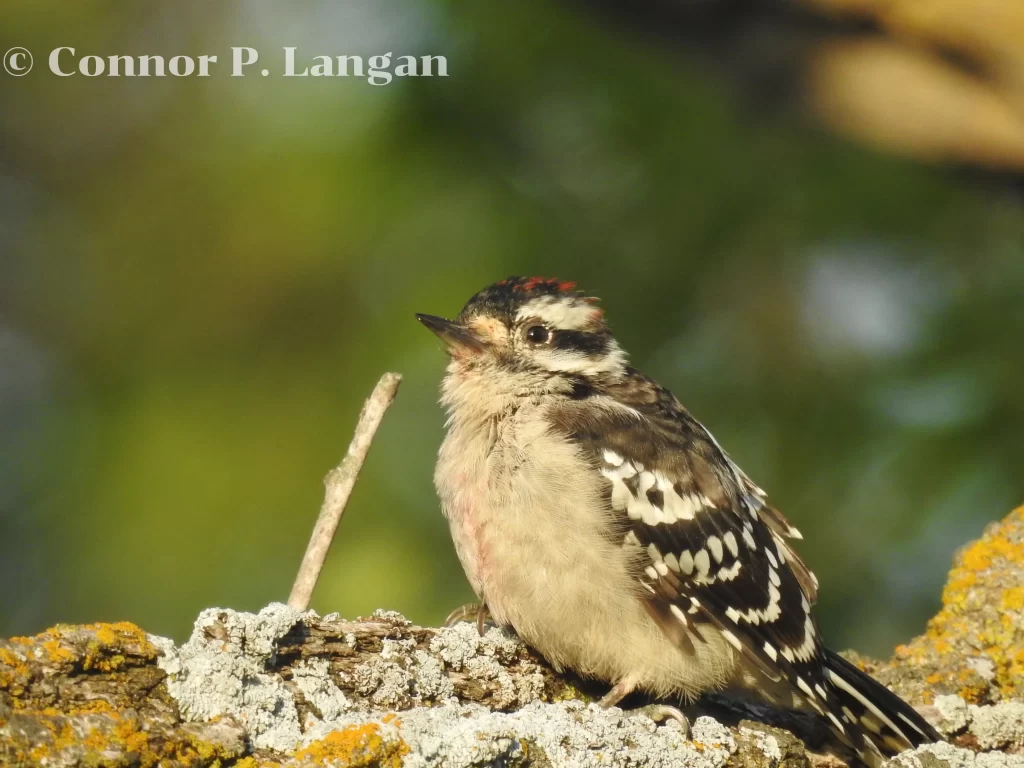
Identification
Downy Woodpeckers are the smallest Alberta Woodpeckers, measuring around 6 to 6.5 inches (~15 – 17 cm). These stubby-billed woodpeckers have black and white wings, a white patch on their backs, and white, unmarked undersides. Males have red napes.
Habitat and Range
Downy Woodpeckers may be found in a diverse array of habitats including parks, residential areas, woodlots, and windbreaks. Their tiny size means they do not need as many trees to thrive as some other woodpeckers. Despite their petite builds, Downy Woodpeckers are distributed throughout Alberta.
Status
Downy Woodpeckers are abundant, being the second-most common woodpeckers in Alberta. There have been more than 159,000 observations of these small Alberta woodpeckers.
Hairy Woodpecker
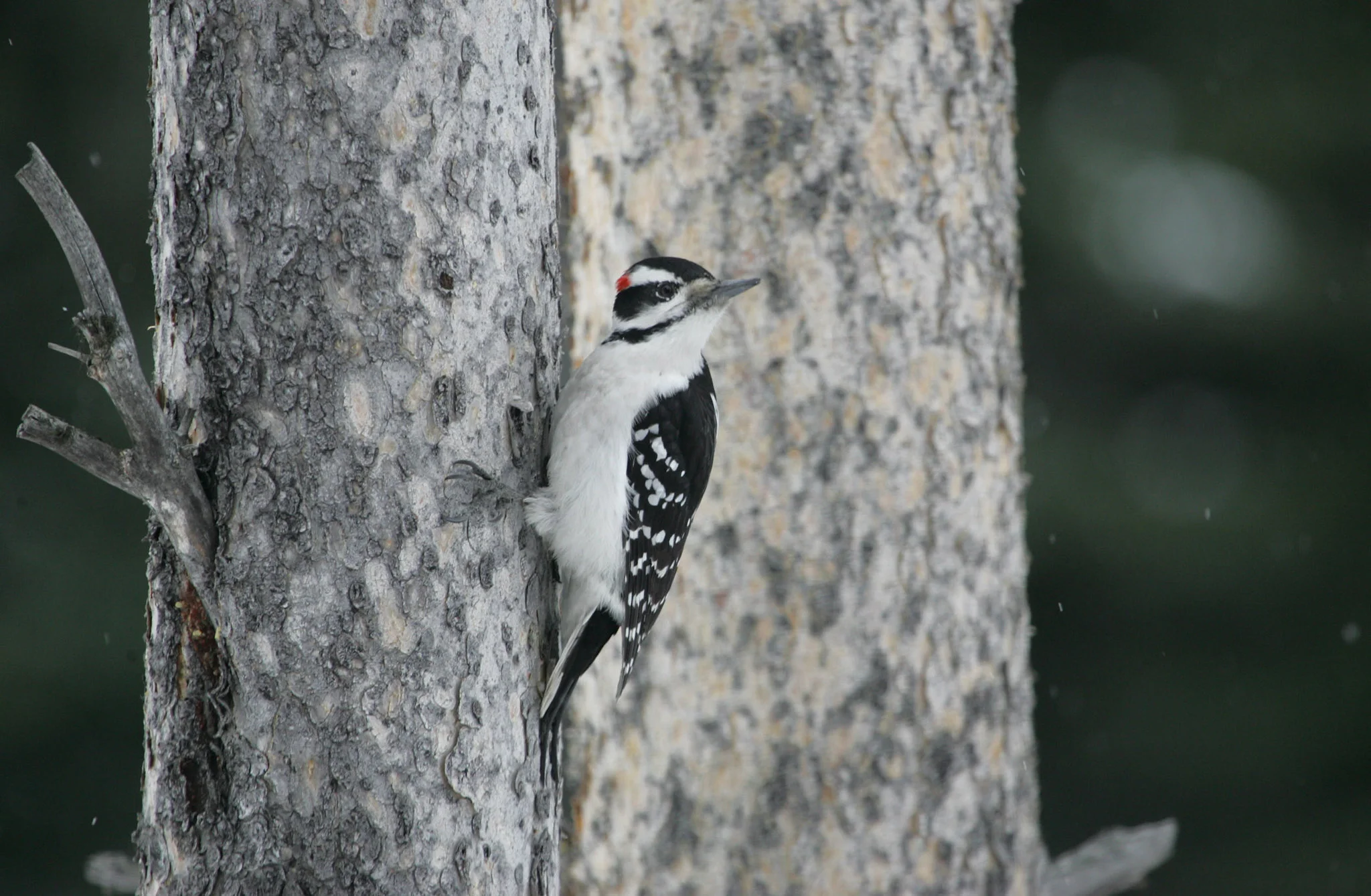
Identification
Hairy Woodpeckers are 8 – 10 inches (~20 – 25 cm) long. They look similar to Downies, but they have a much longer bill. Otherwise, they have all the same field marks as Downy Woodpeckers.
Habitat and Range
Hairy Woodpeckers do well in Alberta’s boreal forests, but they can also prosper in concentrations of deciduous woodlands. They excel at surviving in most places with ample dead or decomposing trees, and they can be found throughout the province.
Status
Hairy Woodpeckers thrive in Alberta. Here, there have been about 69,000 eBird observations.
Lewis’s Woodpecker
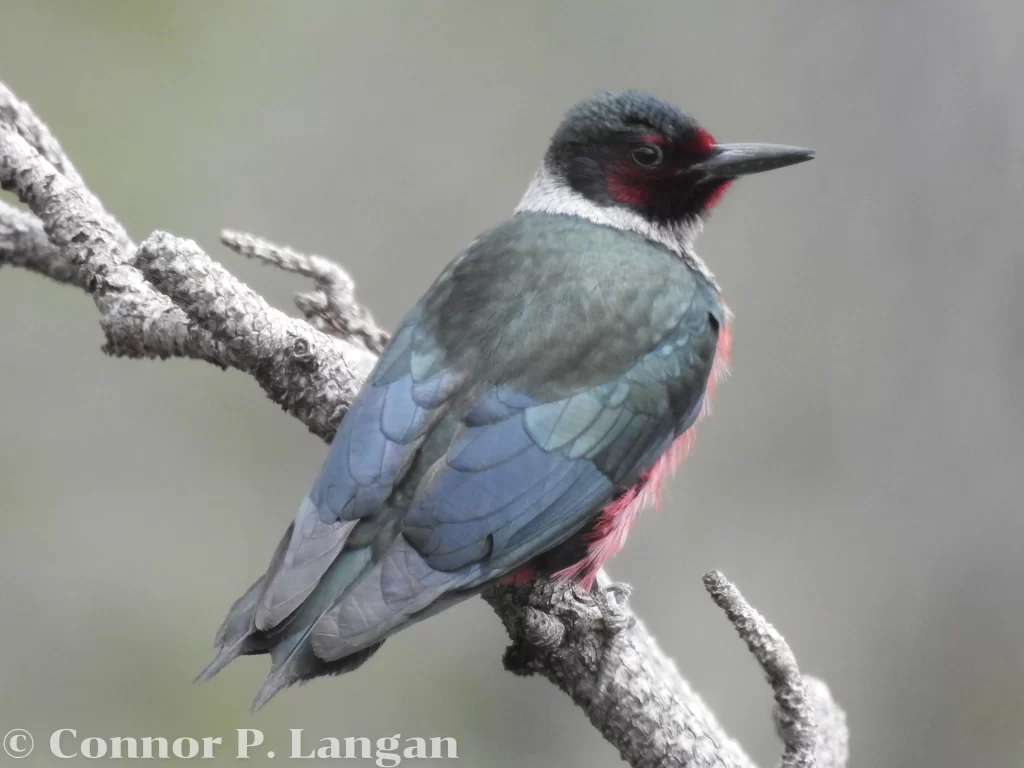
Identification
Lewis’s Woodpeckers are sizable, measuring 10.2 – 11 inches (26 – 28 cm). Lewis’s Woodpeckers are attractive-looking birds, with green-back heads and backs, red faces, pink undersides, and gray chests.
Habitat and Range
Lewis’s Woodpeckers do well in open woodlands that have recently been burned. In fact, they can prosper in areas with no canopy cover at all. Therefore, areas that have been hit with intense fires recently are often great for Lewis’s Woodpeckers, as they love the immense amount of snags that are left behind after a fire.
Southern Alberta is the best place to look for Lewis’s Woodpeckers. Here, small breeding populations exist.
Status
Lewis’s Woodpeckers are an uncommon woodpecker in Alberta. Nonetheless, those who look in the appropriate locations in southern Alberta may be able to discover one of these woodpeckers. Just shy of 400 eBird reports from Alberta include this species.
Northern Flicker
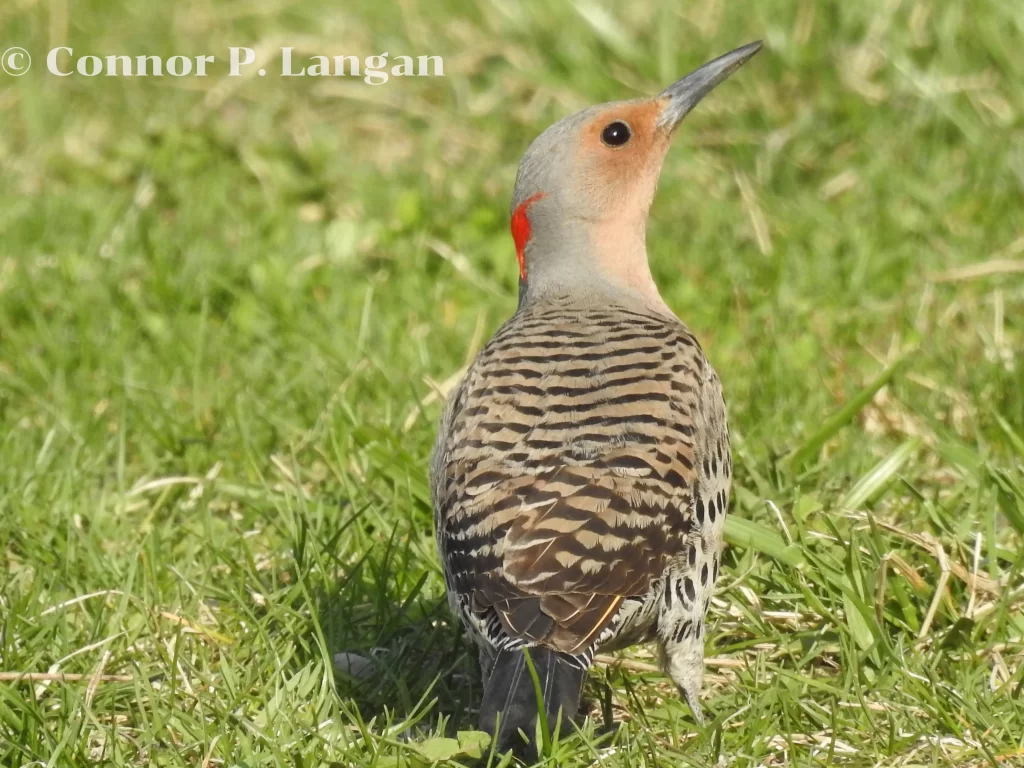
Identification
Northern Flickers are 11 – 12 inches (28 – 30.5 cm) in length. These creatures have light brown undersides with black speckles, dark brown, barred backs, and red or yellow tail feathers. Males have black mustaches.
Habitat and Range
Northern Flickers are abundant in Alberta, and one of the reasons for their prosperity has to do with the fact that they seek different habitats than most other woodpeckers. Although they can occasionally be found deep within forests, they prefer open landscapes with clumps of trees scattered throughout. Here, they patrol the ground for ants and other tasty insects.
These habitat requirements mean that Northern Flickers are adaptable, being able to survive in neighbourhoods, parks, cemeteries, and other places where many other woodpeckers in Alberta would fail.
Status
Northern Flickers take the cake for being the most commonly observed Alberta woodpecker, barely edging out the Downy Woodpecker. Indeed, more than 160,000 observations for this woodpecker of Alberta have been submitted to eBird, so Northern Flickers are thriving in this province.
Pileated Woodpecker
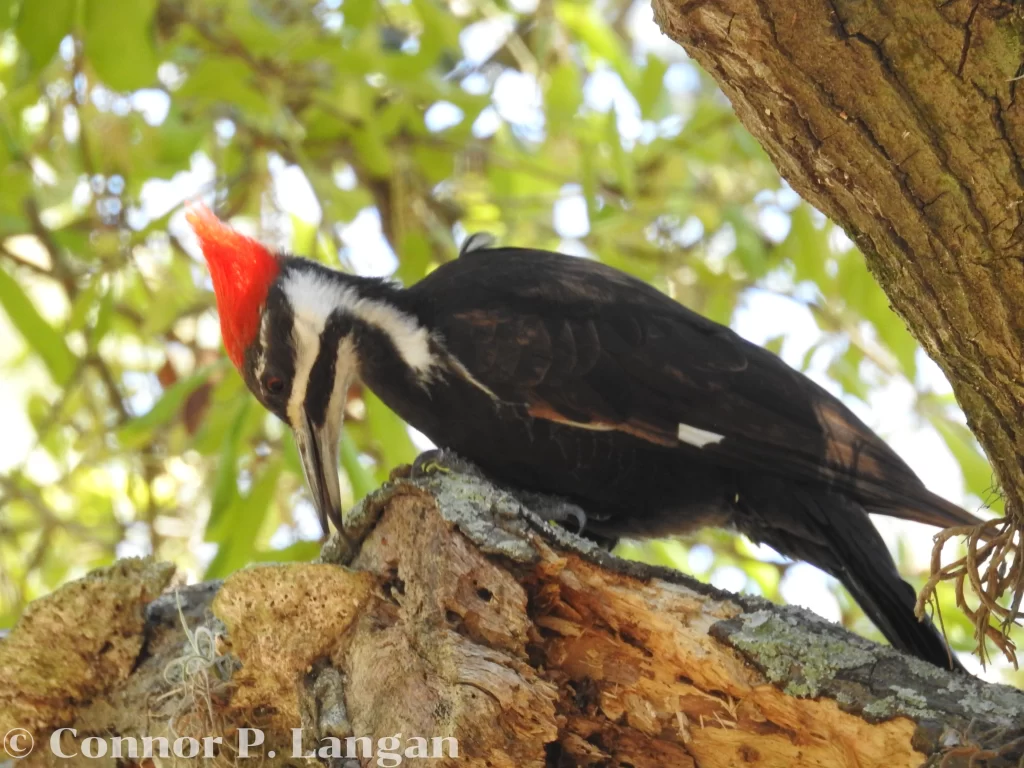
Identification
Pileated Woodpeckers are the largest woodpecker in Alberta, measuring 16 – 19 inches (40.5 – 48.5 cm). Their plumage is simple, as they are black with white wing patches. Males have more red on the face than females.
Habitat and Range
The substantial size of these Alberta woodpeckers means that they need plenty of habitat to meet their needs. This means that large, mature forests are the best places to find them. Not only do the forests have to be old, but they must be extensive. Indeed, a study from western Oregon found that an individual Pileated Woodpecker has a home range of about 478 hectares.
Status
Considering their hefty habitat requirements, it’s no surprise that Pileated Woodpeckers are not as numerous as some of the other Alberta woodpeckers. Still, there are plenty in the province, with more than 31,000 eBird records from Alberta including this species.
Red-headed Woodpecker
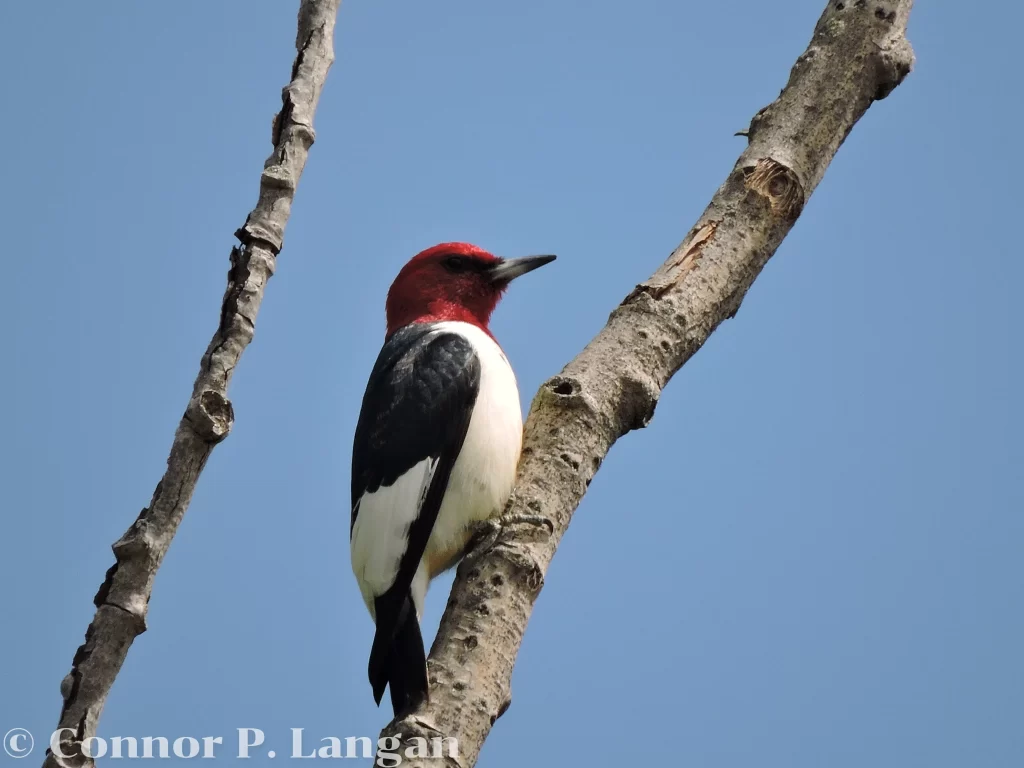
Identification
Red-headed Woodpeckers are 7.5 – 9 inches (19 – 23 cm) in length. Adults have solid red heads, black and white checkerboard backs, and white undersides. Immature birds are often the birds to show up in Alberta, and they have gray heads rather than red.
Habitat and Range
Much like Northern Flickers, Red-headed Woodpeckers seek out open woodlands where they frequently fly out from branches to capture insects in midair. These woodpeckers in Alberta are not expected breeders in the province, so the records of this species are merely comprised of birds that wander into Alberta. Therefore, the best places to look for Red-headed Woodpeckers in Alberta would be the south and eastern fringes of the province.
Status
Red-headed Woodpeckers are the rarest woodpecker in Alberta to make this list, with only 116 eBird records submitted at the time of posting this article. Nonetheless, they are observed annually, and they may be slowly expanding their range into Alberta.
Red-naped Sapsucker
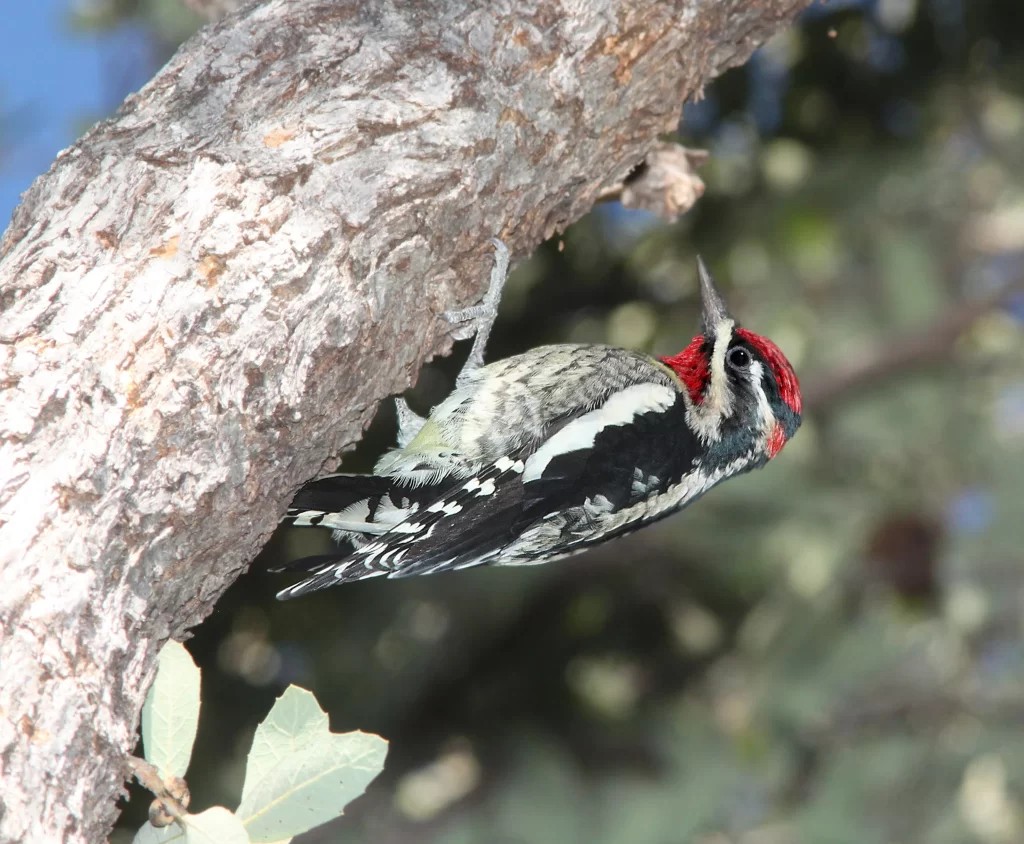
Identification
Red-naped Sapsuckers measure 7.5 – 8.25 inches (19 – 21 cm) long. Both sexes have red throats and red patches on the backs of their heads. They’ve got yellow, unmarked undersides, and barred black and white backs.
Habitat and Range
Red-naped Sapsuckers breed within mountain forests. Here, they seek out trees such as aspens, as they make for excellent nesting trees. These woodpeckers of Alberta only visit the province during summer, as they depart for warmer locales in the winter. Additionally, they are exclusively found in southwestern Alberta.
Status
The limited distribution of Red-naped Sapsuckers in Alberta means that there is not an abundance of records from this province. Nonetheless, about 4,500 eBird reports have included these species. Although they have a relatively small range here, their populations seem to be doing well.
Yellow-bellied Sapsucker
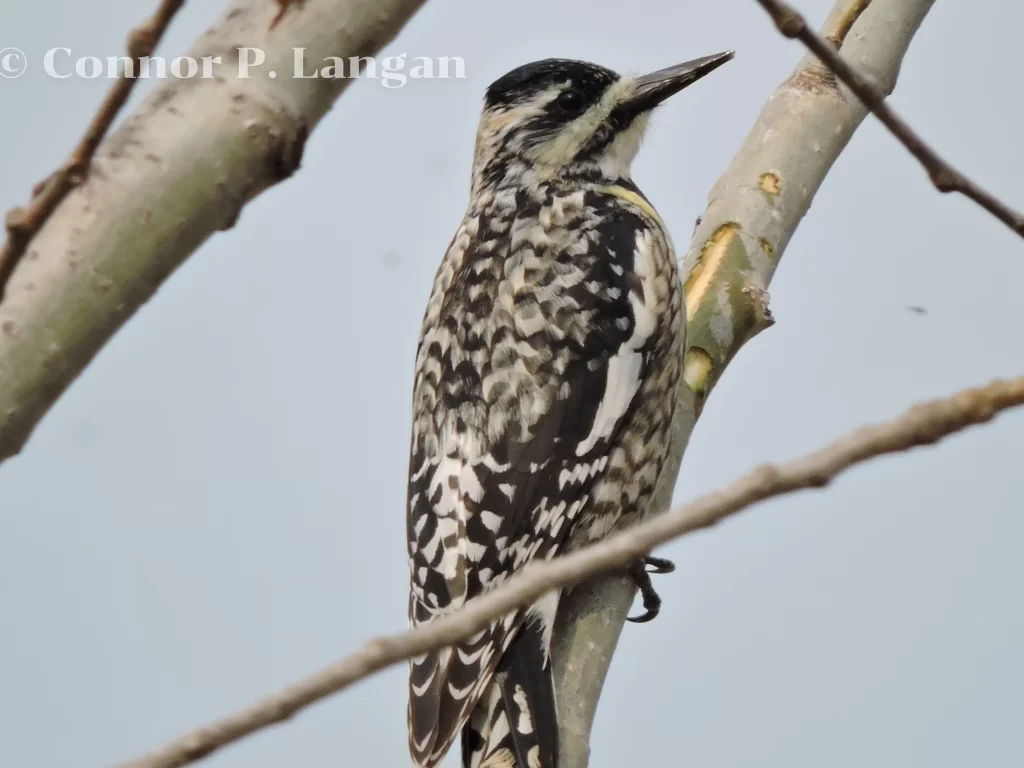
Identification
Yellow-bellied Sapsuckers measure 7 – 8.75 inches (18 – 22 cm) in length. Males have red throats, while females possess white throats. Their heads are black and devoid of any red colour. Moreover, they have yellow undersides devoid of barring and barred black and white backs.
Habitat and Range
Yellow-bellied Sapsuckers are not too choosy in their habitat preferences, as they may be found in an assortment of wooded habitats. Therefore, these types of woodpeckers in Alberta tend to avoid the southern portion of the province given the many grasslands that are found here. Instead, look for Yellow-bellied Sapsuckers in central and northern Alberta.
Status
This Alberta woodpecker is only present during the breeding season, vacating the province for warmer winter locations. No matter, they are somewhat common in the breeding season, with more than 15,000 eBird reports being made.

